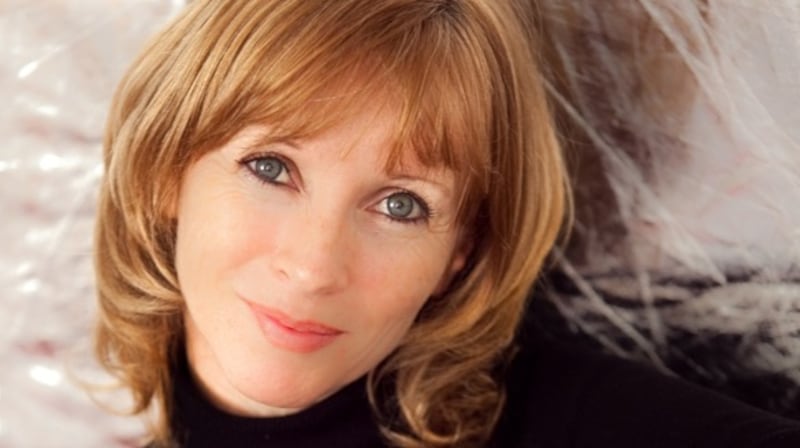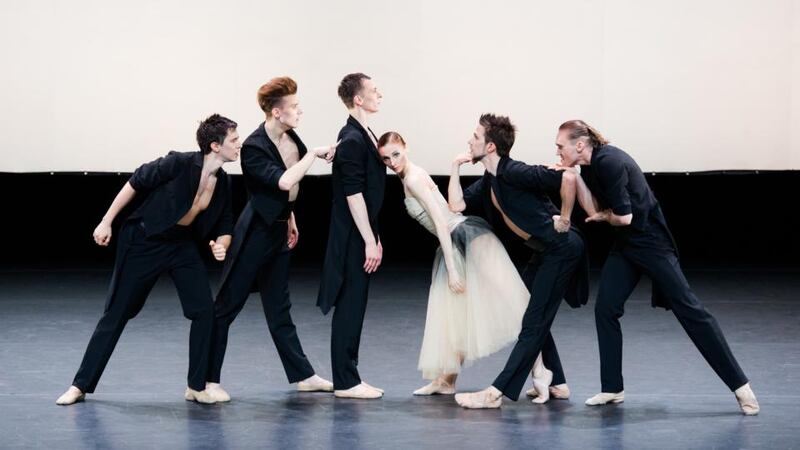Entering the halls of the Bolshoi Theatre and its studios requires getting past strict security. The Moscow theatre has always been protected, but since the 2013 attack on then Bolshoi Ballet director Sergei Filin, the company has been embroiled in investigations and hirings and firings that have kept it under even tighter surveillance.
Despite any embroglios within the company, during the past year choreographer Marguerite Donlon, from Co Longford, has been moving in and out of the hallowed halls and rehearsal rooms of arguably the world’s finest ballet company.
This week, Donlon's ballet, Strokes through the Tail, makes its Bolshoi premiere as part of the Svetlana Zakharova ballet gala.


It is one of three that this prima ballerina will dance in an evening that also features works by Yuri Possokhov, choreographer-in-residence with San Francisco Ballet; and Patrick de Bana, who worked with Compañía Nacional de Danza of Spain.
Despite the staggering accomplishment it would be for any choreographer to create for the Bolshoi, it is even more remarkable for Donlon, who started her ballet training late and in Ireland, and who since the 1990s has been based in Germany.
She has succeeded where others from more privileged training grounds have not, consistently earning praise for her dances’ fluidity, sensuality and understated sense of humour.
Some choreographers seek their next commission through planning, networking and agent negotiations, but Donlon unexpectedly received this request to choreograph from Zakharova herself.
"I got an email from her manager," Donlon says. "They heard about my ballet Strokes through the Tail, did some research and found footage on YouTube. They say it wasn't easy to track me down, and in the end they found me on Facebook. Then they asked would I consider letting her dance this piece."
“Svetlana is such a star,” Donlon says. “When I first flew out at the end of October to meet her, I understood what everyone was talking about. First of all her body as a dancer seems to go on and on. And she is so aware of her body. But what I really love about her is her philosophy and spirit.”
Zakharova possesses the flair that comes with being a Bolshoi star. She began her career at the Mariinsky Ballet in 1996, but in 2003 the Bolshoi lured her. Since then Zakharova has become one of only three ballerinas working today to be given the title prima ballerina, the other two being the Italian Alessandra Ferri and the Georgian Nina Ananiashvili.
Donlon says going out with Zahkarova in Russia is like being with a rock star.
Open to the process
Donlon quickly became enveloped in the machinations of the Bolshoi when coaching Zakharova in Strokes through the Tail. Although Donlon brought along her own assistant to help set the ballet, Zakharova brought her own personal coach. In addition to Zakharova, five men perform in the dance.
“Every ballerina has her own ballet mistress, and when we were setting the piece, Tatiana was always there,” Donlon says. “If she had been insistent on sticking to the form and always insisting on purity, purity, it might have created difficulty for us. Instead, they were both open to the process.”
That Donlon’s more contemporary style will appear on the Bolshoi stage by one of its most famous ballerinas is telling. Since the Cold War thaw in 1991, the Bolshoi’s repertoire has been under scrutiny, especially inside Russia.
The company has struggled with how it might embrace the more contemporary ballets so prevalent with other companies around the world. Directors with opposing views have come and gone, including Filin, who departs this year after a three-year tenure.
Filin introduced ballets from modern choreographers, including French choreographer Jean-Christophe Maillot's version of The Taming of the Shrew. Still, because of the political infighting and differing views on the Bolshoi's artistic mandate, he is most likely to be remembered more for the acid attack that nearly blinded him than for the addition of fresh new ballets to the company's repertoire.
Work ethic
Donlon says that, politics aside, the most striking thing about working at the Bolshoi is the dancers’ work ethic.
“I was curious about how the men would be, because I knew Svetlana had seen the piece and would be open to it,” says Donlon. “For the men, it was a lot more work for us because it was very different for them. But as principal dancers of the Bolshoi, I was excited to see how hungry they were for this opportunity.
“And working with Svetlana was amazing. She is so beautiful. And she works so hard, with such focus. She only smiles when she feels she really has it, and then that smile is so rewarding.”
As a child Zakharova passed the strict Russian prerequisites for height, weight, bone structure and talent before entering the Vaganova Academy of Russian Ballet at age 10.
By contrast, Donlon started ballet at 16 after convincing Anica Louw of Shawbrook, the Longford-based dance school and dance centre, to give her a chance to train. A remarkable 3½ years later, Donlon had a coveted job as a dancer with English National Ballet and then the Deutsche Oper Berlin, where she was exposed to some of the greatest choreographers in the ballet canon. Inspired, her career trajectory turned to choreography.
After founding her own Donlon Dance Company in 2001, she was hired as artistic director for Saarland State Theatre in Saarbrücken, Germany, where she remained for a fruitful 12 years, creating more than 30 productions that endeared her to local audiences and built her reputation as the company travelled to the US, Europe and the Far East.
Donlon’s tenure ended abruptly with a sudden change in artistic directorship, a familiar theme in the ballet world, but her continued success – with no ties to one particular company – led her to this latest foray in Russia.
One might argue it doesn’t get any better than this as a choreographer – setting your movements on a prima ballerina and going behind the scenes at the Bolshoi. But Donlon remains open to the possibility that something equally amazing might happen next.
“It would be a scary thought if I thought this was the pinnacle,” Donlon says. “It is part of my life and I love how it all happened. But one cannot dare to think, This is it.
“If I stand outside myself and look at it, I do realise it is pretty incredible. But when I create I feel the same way. I don’t know where it comes from. I could sit down and analyse it, but it’s like there’s another me that comes out. So I keep moving because if you sat around and wallowed in the glory of what you’ve done, you might not keep moving on.”


















